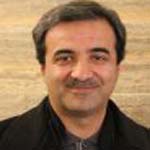Investigating and comparing object-oriented algorithms used forextraction of water bodies from sentinel imagery
With their dynamic nature, water resources are essential fortheenvironment and play a vital role in human life, development of communities, and climate change. Water bodies have been declining over time due tothe rapid growth of urbanization, excessive abstraction of water, damming, increasing demand for agricultural products, pollution anddegradationofthe environment. Therefore, monitoring water bodies and retrievingrelated information are essential for management of environmental issues and decision making in this field. Accurate recognitionof water bodiesiscrucialin many applied fields, such as environmental monitoring, production of land cover and land use maps, flood risk assessing and monitoring, and drought monitoring.Modern methods such as object-oriented processing take advantage of remote sensing capabilities to make accurate and precise recognition of water bodies possible. Classical methods on the other hand, cannot accurately classify satellite imagery with similar spectral information merging into each other. This reduces the accuracy of pixel-based classification methods. Therefore, object-oriented processing of satellite images is used in the present study to obtain precise maps for the identification of waterbodies.
A part of Aji Chai River, near the city of Khajeh in Harris County, has been selected as the study area. The total study area included 28 square kilometers. Based on the aim of the present study, the study area was selected in a way to contain linear features, arable lands, and other topographical and human-madefeatures (shading factor) which interfere with the extraction of water bodies and reduce the classification accuracy. Object oriented methods (the closest neighbor and fuzzy object-oriented methods) were used in the present study to identify and extract water bodies from high resolution images (Sentinel 2A imagery).
Different functions used in OBIA techniques,such as GLCMtextual features, average number of bands in the image, geometric information (shape, compression and asymmetry), and normalized difference vegetation index(NDVI) were used in the present studyto precisely extract land cover. Moreover, algorithms with the highest membership degree in the class of water bodies were considered as effective factors in classification. Usual methods of extracting and monitoring water bodies use spectral information of pixels, and therefore, have limited ability in distinguishing water bodies from linear features, such as roads, clouds, shaded regions, and residential areas. These methods also have limited capabilities in mountainous areas, especially when they are required to separate water from snow. In other words, these methods cannot separate water bodies from regions with lower albedo. Therefore, the present study takes advantage of object-oriented methods (the nearest neighbor and fuzzy methods) and evaluate their effectiveness in the extraction of water bodies.
In this study, the nearest neighbor and fuzzy object-oriented methods were used to extract water bodies and their efficiencies were compared. To improve the results in the nearest neighbor method, the separation space between the samples was optimized using the FSO algorithm, then the water bodies were extracted with 95% accuracy and a Kappa coefficient of 93%. Findings of the present studyindicated that this method cannot distinguish water bodies from shaded regions, and linear featuressuch as roads, and residential areas, and categorizes these features as water bodies, which reduces the accuracy of the final results. In the next step, water bodies were once more extracted using object-oriented fuzzy model. In this method, membership degrees were first calculated for each sampleand then applied in the classification procedure. High accuracy of the results of this method (overall accuracy of 98% and a kappa coefficient of 96%) indicated the superiority of this method over the previous one (nearest neighbor). In this method, water bodies are completely distinguished from linear features such as roads, as well as shaded regions, clouds and residential areas. The results of this study can be generalized to other rivers and water bodies. Compared to classical methods, object-oriented methods are more time efficient and accurate.
- حق عضویت دریافتی صرف حمایت از نشریات عضو و نگهداری، تکمیل و توسعه مگیران میشود.
- پرداخت حق اشتراک و دانلود مقالات اجازه بازنشر آن در سایر رسانههای چاپی و دیجیتال را به کاربر نمیدهد.



